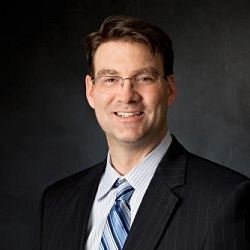Callahan Associates premiered its Executive Roundtable program in 2011, gathering small groups of credit union leaders to network, brainstorm, and commiserate with peers during two-day getaways held throughout the country.
Since then, these gatherings have evolved into true cooperative events. Participants drive the agenda via pre-event interviews and on-site input. There are no guest speakers or sales pitches, just peers from the same area of their cooperatives e.g., CEOs, chief lending officers, chief financial officers, etc. talking shop and learning from one another.
This dynamic group of credit union leaders also decide when it’s time to offer a new roundtable. Based on feedback, Callahan recently added an analytics event to the lineup.
Data science and business intelligence have become must-have tools at many successful credit unions. The conversations that take place during Callahan’s Executive Roundtables are strictly confidential; however, a few participants agreed to talk on the record about their analytics journey.
Align (goals) first to the business strategy, then to technology or infrastructure. You will not be disappointed by helping business leaders achieve their goals.
Here, five credit union leaders offer their thoughts on two important questions: What’s your best advice for credit unions just starting in analytics? And, if you could start all over, where would you begin?
Daniel Hirschlein, Assistant Vice President/Analytics Center of Excellence,Grow Financial FCU ($2.8B, Tampa, FL)
What’s your best advice for credit unions just starting in analytics?
Daniel Hirschlein: Data is the lifeblood of any analytics program. Not making it a priority will seriously inhibit your analytics progress.
Start by identifying all of your sources of data core system, loan origination system, CRM, etc. Next, think about how you can warehouse the data; it’s not really usable if you can only acces it in the production systems. You can prioritize systems based on your strategy around analytics. For example, if you’re looking to dig into transaction data to explore member purchase behavior, then the core system might be the best system to start with.

If you could start all over, where would you begin?
DH: Analytics should not operate in a silo or support only a single business unit it should be a shared organizational resource. With that said, it needs buy-in from the entire senior leadership team.
Again, data is of the utmost importance in an analytics program, and a data governance program established on day one with the right people will help define best practices, formalize business definitions, and add transparency to decisions made surrounding the flow of information within the organization. Although it’s not required to establish data governance before starting with analytics, doing so will make the process run a lot more efficiently.
Kara Stuewe, Executive Vice President of Decision Support and Corporate Services, Lake Trust Credit Union ($1.9B, Brighton, MI)

What’s your best advice for credit unions just starting in analytics?
Kara Stuewe: Solve the data access issues quickly. Enabling access to data sources frees the team to move faster. Our approach was think big, start small, and move fast.
Start with a small win that provides value to the business and gains appreciation and excitement for the work. Work with an internal business partner that has the time and excitement in the work, and build from there with small successes.
If you could start all over, where would you begin?
KS: I’d start in a similar fashion; however, I’d not underestimate the talent challenge. Understanding your talent significantly influences the direction of the programs and tools you select.
Our approach was think big, start small, and move fast. Start with a small win that provides value to the business.
Mike Lindberg, Strategic Analytics Member Insights Manager, Wings Financial Credit Union ($5.3B, Apple Valley, MN)
What’s your best advice for credit unions just starting in analytics?
Mike Lindberg: Don’t get lost in the technology or strategy before starting your analytics program. Embrace the agility that comes with having a single individual or small team that focuses on analytics and execution.
Analytics is an area that is well suited for iteration meaning consistent, quick wins will get you further in the long run than impressing the organization and its leaders with a technically complex or perfect solution. These iterations allow the organization’s leaders to embrace data-driven decisions in a way that is comfortable to them ultimately getting you to the

goals that you have for analytics in the first place.
And speaking of goals align them first to the business strategy and then to technology or infrastructure. You will not be disappointed by helping business leaders achieve their goals.
If you could start all over, where would you begin?
ML: Looking back at both times we started analytics programs with the first being less than ideal I’d focus first on building a relationship with the marketing area. Marketing will be a consumer of your analytics efforts, both traditional business intelligence such as reporting and visual analytics, and data science. They will likely be a main stakeholder for the duration of your analytics program. Also, they’re marketers. Wins with marketing are communicated, or marketed, within the organization.
Stephen Geyen, Vice President of Business Intelligence, Affinity Plus FCU ($2.3B, St. Paul, MN)

What’s your best advice for credit unions just starting in analytics?
Stephen Geyen: Identify a project you can complete within a month and show it has a meaningful impact on members’ lives. The best projects are those that benefit the member and the organization a win-win that saves the member money and increases credit union revenue or makes life easier for the member and reduces credit union expense.
If your purpose for analytics is on the right track, then you will continue to have great success stories to share with the entire organization.
If you could start all over, where would you begin?
SG: I would do more early on to identify like-minded credit unions on the same analytics journey. My knowledge really accelerated after I was able to identify a handful of credit unions and trust third-party partners that had the right goals.
I would do more early on to identify like-minded credit unions on the same analytics journey.
Dan Laclerc, Vice President of IT Business Services, Ent Credit Union ($5.7B, Colorado Springs, CO)

What’s your best advice for credit unions just starting in analytics?
Dan Leclerc: Get the senior leadership team involved and start with high-level discussions regarding the long-term strategy for analytics. If possible, get a champion or sponsor from senior management to support the new initiative. Once you get a sponsor or champion, then start working on the low-hanging fruit. Small wins will lead to larger ones in the future.
If you could start all over, where would you begin?
DL: My journey with analytics began when I transitioned from finance to analytics. The department and program had been underway for about four years before I was involved. Looking back on the program, we didn’t have clearly identified business needs for the massive data warehouse we built. In hindsight, we should have laid out a plan to provide a framework in which we could capitalize on all the data and analytics.
These interviews have been edited and condensed.
